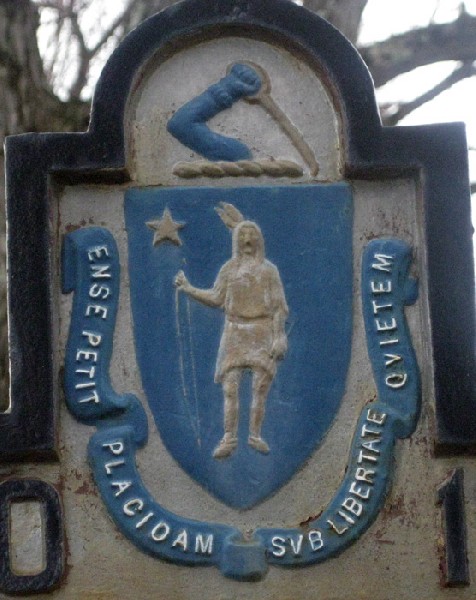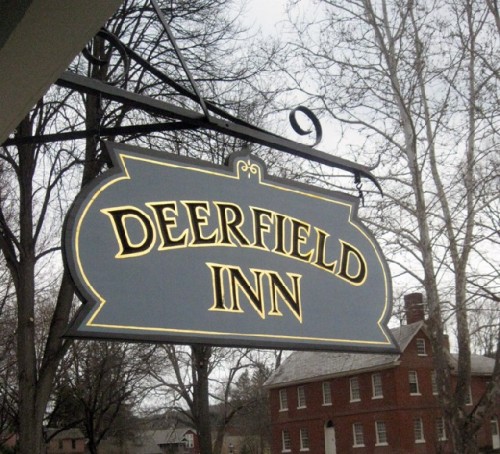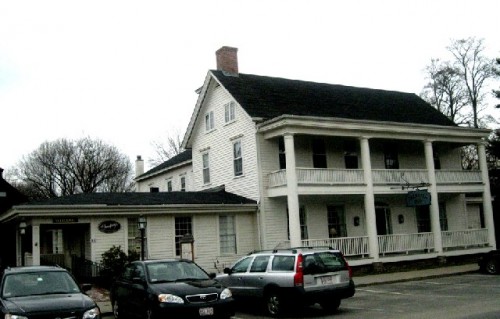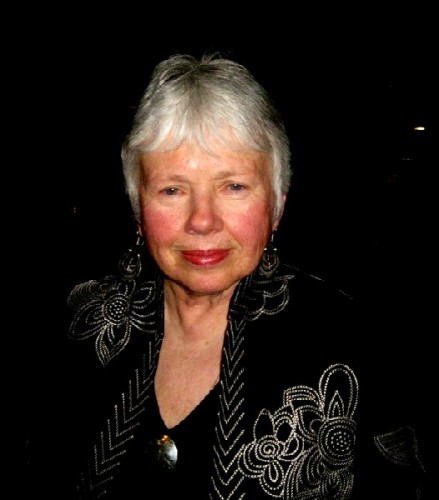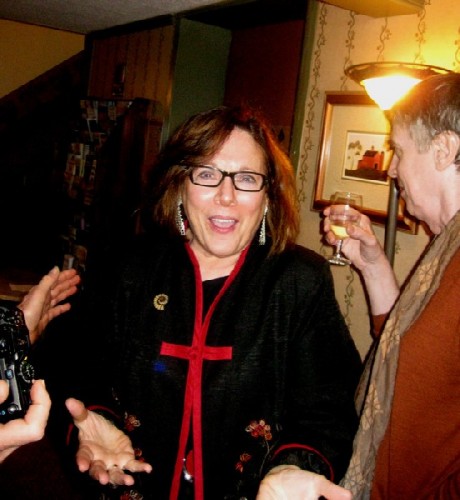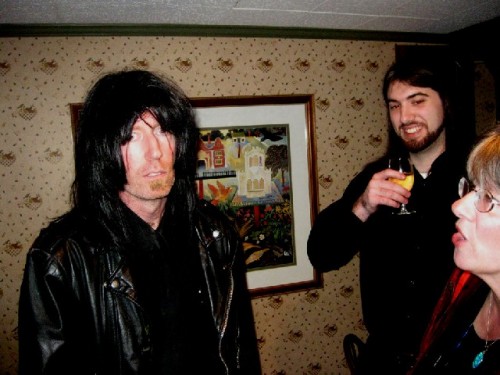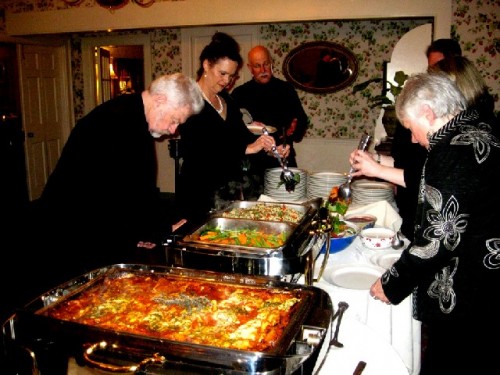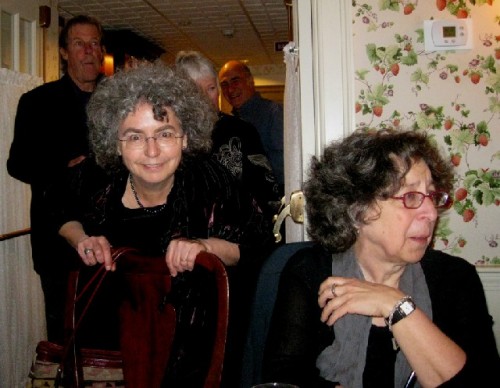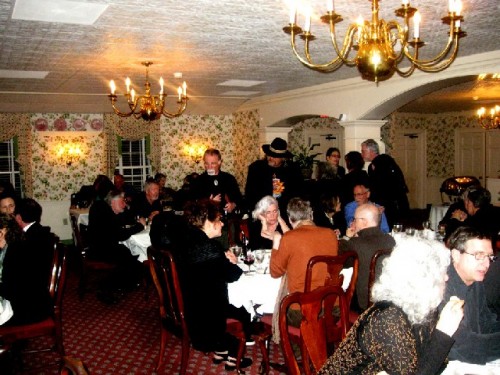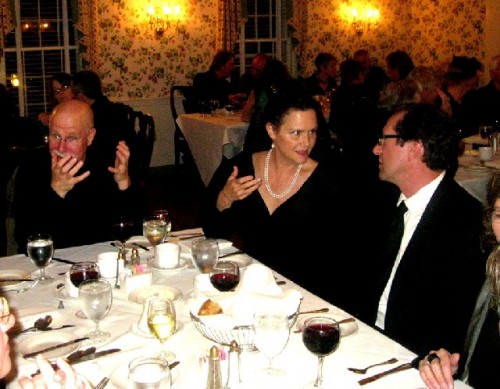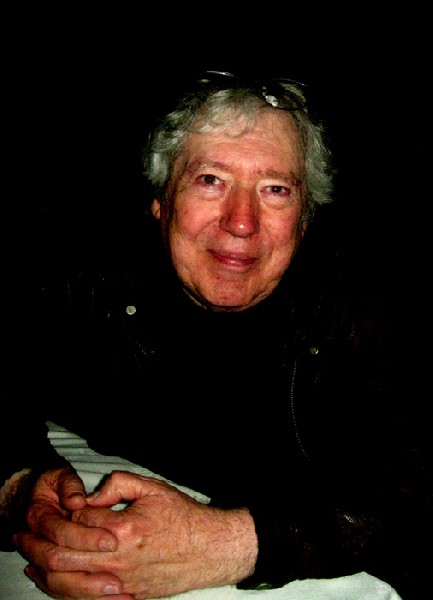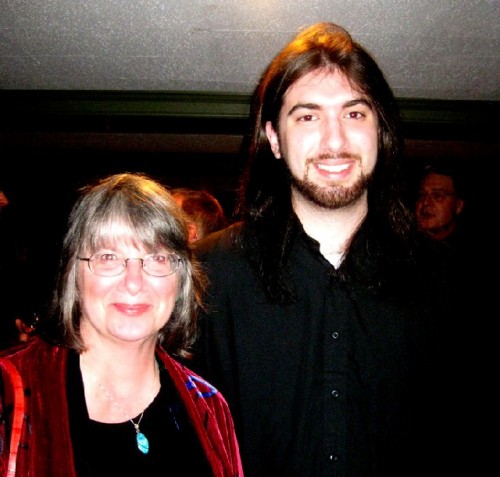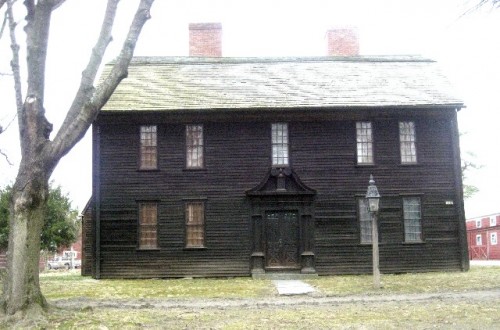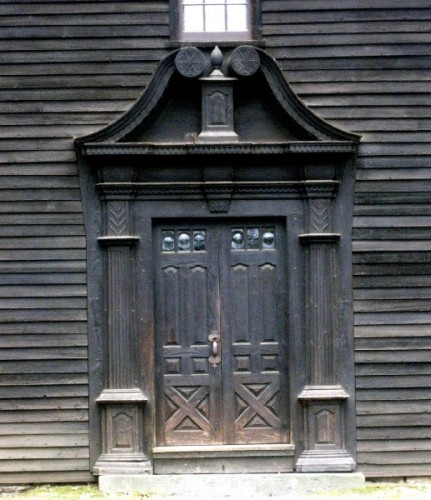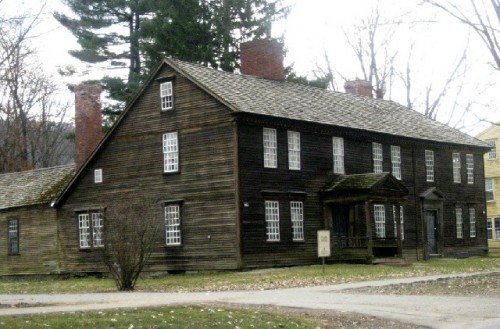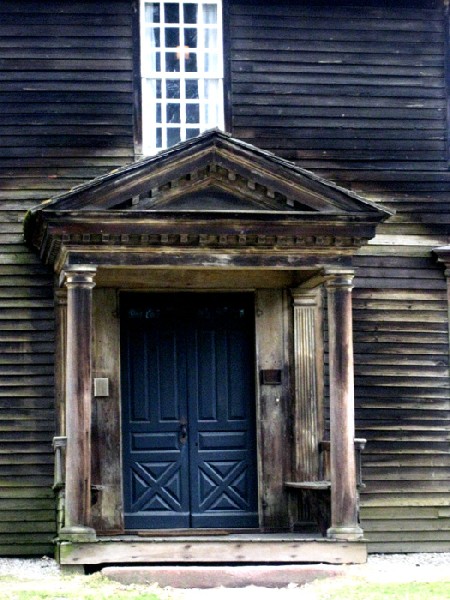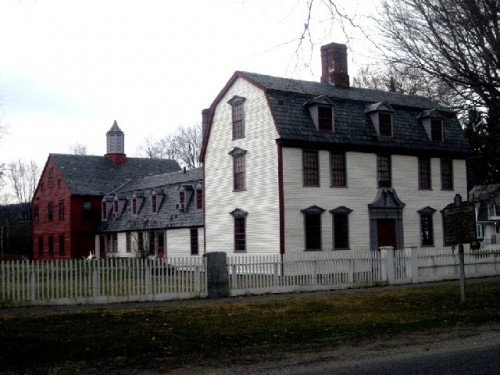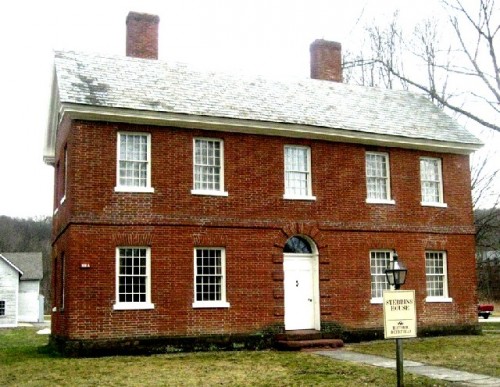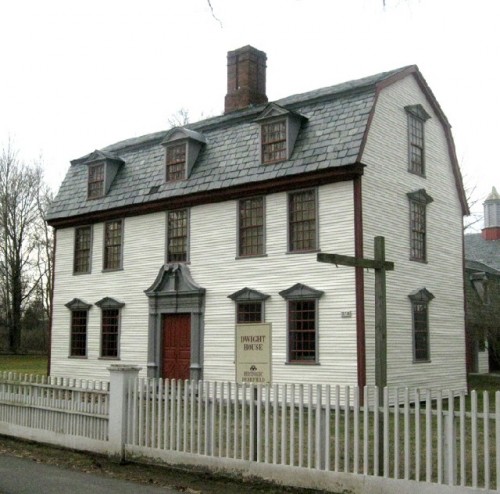Artists Gather at Deerfield Inn
Annual Event for Pioneer Valley Community
By: Charles Giuliano - Mar 24, 2010
With its cluster of colleges and universities the Pioneer Valley in Western Massachusetts is home to a lively and diverse community of artists. In the fine arts it is best known for its Northampton Realists: Randall Diehl, Frances Cohen Gillespie, Gregory Gillespie, Jane Lund and Scott Prior.Some years ago I met these artists and included them in a traveling exhibition of portraits Here's Looking at You organized for Montserrat College of Art in Beverly. The show traveled to Westfield State College where I worked with the faculty artist and curator Marci Gintis. Through that project I especially came to know Frances and all of her wonderful, quirky eccentricity.
She was noted for working intensely and obsessively. For the exhibition she showed a large painting of a seated woman with bare feet. The painting had been started in Italy and later exchanged with her shrink. She had been working on it off and on for several years.
On deadline I needed a photo for the catalogue. She sent me one. Then another a week later and one after that. Each time she prevailed that the work had changed significantly. Well, not really. After the show it went back to her studio for more work. By now that infamous bare foot is an art world legend.
Frances and Greg were married from 1959 to 1983. They spent a considerable time working in Rome. After some years of struggle on her own Frances married an inventor and scientist and moved away from the region. We were all so happy for her. Not long after, in 1998, she died. Gregory followed two years later. A suicide which shocked and saddened the art community. They were so brilliant and gifted.
In 2004, Theodore E. Stebbins, Jr. curated an exhibition of their work for the Fogg Art Museum of Harvard University. While he was still with the Museum of Fine Arts, Boston Stebbins had acquired their work as well as other paintings by the Northampton Realists for the permanent collection. Of particular note is a group painting by Diehl.
On the occasion of the Fogg exhibition Stebbins wrote, "We are showing the work of Frances and Gregory Gillespie together not simply because of the years they shared, but because the works of each shed light on the other. Together and individually, the Gillespies had great influence on American painters. Their work demonstrates that realism can be a highly individual and expressive style, and that it was a viable alternative for adventurous and deeply committed artists in the late 20th century."
During a recent gathering of artists at the Deerfield Inn, an annual event, the curator and appraiser, E. Linda Poras, recalled that they were planning a dinner which Greg would have attended.
Over time the annual dinners which Poras and the Jane Lund hosted in their homes just got too large and complicated to handle. They decided to move them to the Lord Jeffrey Inn in Amherst. When the Jeff underwent renovation, for the past two years, the dinner has moved to the Deerfield Inn.
While we received invitations to past gatherings it seemed like a stretch to get to Amherst and back for dinner. But the buzz on the events was enticing. There was also the opportunity to explore historic Deerfield. We opted to go all in and booked a room at the Deerfield Inn.
The event started in a basement function room and service bar. I had anticipated a cozy gathering around a roaring hearth with rum toddies made by sticking a hot poker in the mug. Something quaintly colonial. We were surprised when the room filled with some 60 guests.
It was all terribly informal. Perhaps too much so. Not even name tags. You just paid your money, cash. No checks or credit cards. Then we were off to fend for ourselves in a room of mostly strangers. A former Art New England colleague, Wendy Kaplan, spotted me. They also stayed over at the Inn and we chatted over breakfast.
"I've been coming here every year since the beginning" the curator and author John Arthur commented. "I like that it is informal and nobody is trying to sell you anything. It's a really great event."
At the end of the evening John and I caught up on mutual interests and activities. When he was director of the Boston University Art Museum he was my adviser in a directed study of Jack Beal and a project for a series of paintings for the Department of Labor in Washington, D.C. John discussed several huge exhibitions in Japan and interests in architecture.
The guests filled the dining room with several long tables. There was an outstanding buffet and the evening seemed to fly by. We will surely return next year and make more of an effort to network and take notes. It would be great if the organizers would coordinate some of the information. Like a cheat sheet of participants with contact info and e mail addresses. It would be useful in providing a head start toward an overview of artists living and working in the area. There appears to be a lot going on and we would like to expand our coverage.
On Sunday morning we explored Historic Deerfield. It proves to be an intact time capsule of the Colonial period when it was a frontier town. There were just 4,750 inhabitants in the 2000 census. Because of the lack of economic growth and expansion we have a fairly accurate view of frontier life. The village is noted for its renowned Deerfield Academy.
Of course Deerfield has a ghastly history of rape, pillage and genocide. It was caught up in the battles of the French and Indian War. The original settlers largely decimated the indigenous Pocumtuck people a part of the Algonquin nation. At the Battle of Bloody Brook on September 18, 1675, the natives got the best of a force led by Captain Thomas Lathrop. On May 19, 1676 Captain William Turner attacked Peskeompskut in present day Montague. He killed 200 mostly women and children. In a counter attack he was killed. During a French and Indian raid during Queen Anne's War, in 1704, Deerfield was razed. Some 56 citizens were killed and 109 taken captive. Many died in a months long trek to Quebec where the survivors remained.
Along the main street in Deerfield we examined a sign with some historical details. At the top was the seal of the Commonwealth of Massachusetts. There is a flexed arm with a brandished sword above the figure of an Algonquin warrior. Below and around the figure is a legend with the Latin motto "Ense petit placida sub libertate quietem." This translates as "With a sword she seeks quiet peace under liberty." It is an interesting signifier of the role that liberal Massachusetts played in the American Genocide.
During the gathering of artists a guest warned us that the Inn is haunted. Indeed there are many restless souls wandering about the area.
By 1890, attempts started to restore examples of colonial architecture. Charlotte Alice Baker hired Shepley, Rutan & Coolidge to work on her home the Frary House which was joined to the inn and tavern.
Wanting to know more about its colonial architecture I consulted William H. Pierson, Jr.'s American Buildings and Their Architects: The Colonial and Neo Classical Styles. It is a standard reference for American architecture. He briefly discusses Deerfield in pages 84 to 91 with illustrations of the swan's neck pediment above the door of the Williams House (1706-1707), Mulberry House (1752), Old Manse (1768), and Stebbins House (1772).
"Â…Old Deerfield survives today virtually intact, with its history as a town clearly written in its architecture. Although somewhat distorted by overzealous restoration and by importation of buildings which were never there in the first place, Old Deerfield remains, nevertheless, a priceless microcosmic image of early American architecture. As a document of American history it ranks with such significant survival in Newport and Salem," Pierson wrote.
In a chapter titled "Sir Christopher Wren in the Colonial World" Pierson discussed how the provincial, rural carpenters and craftsmen took liberties in adapting from pattern books and designs of the period. In so doing they created an indigenous, vernacular architecture with many eccentric and charming details. They were further limited by the tools and skills of their trade.
In Pierson's encyclopedic entry he does not flesh out the details as to the overzealous restorations and which buildings were moved to the site or built later in a retrograde style. It was also frustrating to search this topic on line. Even the Historic Deerfield site lacked detailed information on its historic buildings.
We will attempt more extensive research before returning next year for the annual artists' dinner. In addition to a truly great evening we enjoyed the opportunity to explore examples of Early American Architecture. And encounter our horrendous historical legacy. .


